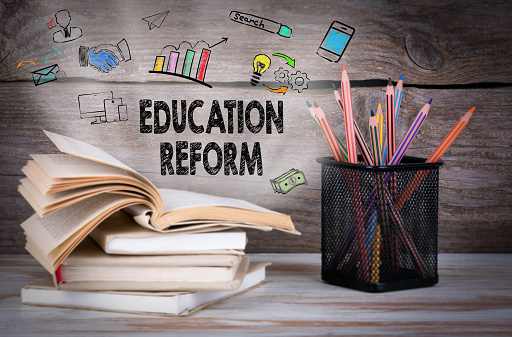How Has Closure of Schools Due to C0vid-19 Affected Learning & How Can This Pandemic Influence Future Education Reforms?

The COVID-19 pandemic and the need for the use of educational tech for distant learning will bend, blend, and change the new norm in the education systems through the reimagining of time and space. Educational tech has constantly promised anywhere, anytime learning and the global community is currently witnessing the opportunities and challenges of this mode of education. While learning systems are dealing with the emergency responses to the COVID- 19 crisis, these systems are also laying foundations for future resilience, recovery, and reforms to the education system. Learning institutions will sooner or later re-open and students will go back to the classrooms.
The decisions and investments, however, being promulgated today to offer distant learning will build a new normal in which questions of when students learn and where they learn will merger home learning with classroom learning bringing learning to the student – anywhere, anytime.

How is the Coronavirus (COVID-19) pandemic affecting learning and how can this pandemic influence future education reforms?
This article looks at five key questions many countries are raising in light of COVID- 19 school closures and the answers that may disclose the future of education reforms.
Education resources.
What resources and content are available for distant learning and how can we integrate these into the education curriculum? In reaction to this query, education ministries have found a great amount of existing digital resources which are freely available to the general public. They have also noted however that these available resources need integration and categorization with the educational curriculum in addition to a plan of multi-model delivery through the most suitable channel – TV, Radio, and On-line. Moreover, many nations like Brazil are getting new crowdsourced information on YouTube. This goes a long way in getting education material remotely to a wider population of learners without necessarily congregating them in a particular location.
Student engagement.
How do schools maintain student engagement through distance learning where there is no physical interaction between students and teachers? Schools are identifying curriculums that incorporate interactivity, storytelling, and games to motivate and engage students. Poland, for example, supports a vast network of innovative content initiatives like Grarantanna, which incorporated the setting up of an educational Minecraft server.
Parent and teacher engagement.
How can the new system best support parents and teachers to engage with learners virtually? Education is often referred to as a social endeavour, the quality and quantity of interaction and engagement with the learners either through parent or teacher is essential to a good learning process. Countries are expanding the human resource available to facilitate student learning. Argentina for example, through Seguimos Educando, introduced the idea of combining the teachers with a conductor (lawyer, journalist, scientist, astronauts) for TV and radio broadcasts.
Assessment.
How do the relevant authorities know if learning is properly happening and how do they tackle the learning gaps? Assessing student progress from a distance is a great challenge to surmount. Many nations have modified or cancelled national examinations and have resulted in other forms of assessment. In Egypt, for class 3 and 7 (transition years), examinations will not be administered to students at the year. Instead, a study project for each examinable subject will be submitted on the learning electronic platform. In Kenya class 8 and form 4 (transition years), examinations have been postponed to 2021 altogether. The COVID-19 pandemic is forcing many nations to reconsider the importance of the normal high stakes exams
Data infrastructure.
What investments should learning institutions make to ensure greater access to online resources? Educational ministries are seeking out to telecommunication providers to find ways to expand access to parents and students, discovering the necessity for increased server capacity, and finding challenges with the integration of the new platforms. This article highlights how educational ministries are working hand in hand with technology providers to find better solutions like the zero-rating in Colombia which applies the use of their public hotspots and the universal service funds. Other nations like Bhutan are also finding ways of reducing the costs for connectivity. Many nations are also embracing open learning systems.

Conclusion.
The overwhelming question is how COVID-19 will affect the future of the education system and how learning will be re-imagined? COVID-19 has highlighted the significance of the physical space schools offer as a community hub. Schools should be appreciated as a vital public space for conveyance of child care and paper learning resources in addition to providing a safe haven for learners while parents are at work. More significantly however schools also offer space for social meetings with teachers, peers, and parents. COVID-19 however has shown that the schools aren’t the only places learning happens.








